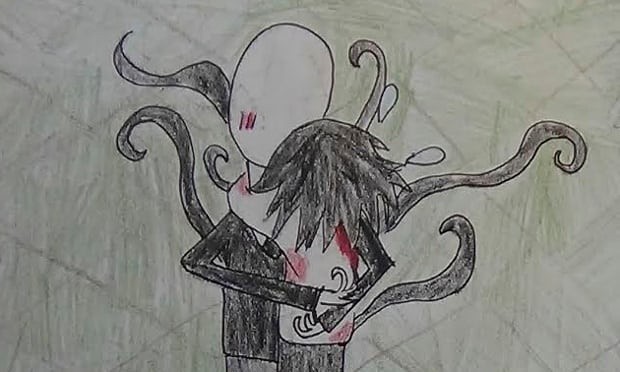Everything You Didn’t Know About Slender Man
by claire_linic, 8 years ago |
4 min read
A history of the world’s realest urban legend.
What’s more dangerous than the Slender Man? The pre-teen girls that believe in him. In 2014, two 12-year-olds in Wisconsin stabbed a friend 19 times to appease a fictional character called Slender Man. Though urban legends have been a part of our culture for decades, this is the first time one’s been used as a motive in court. On Feb. 1, 2018, a judge sentenced one of the girls, Morgan Geyser, who’s now 15, to 40 years under supervision by a mental institution. To understand this case, we have to understand the Slender Man. To understand the Slender Man, we have to understand “creepypasta.” It’s a lot. So let’s get started.A Brief History Of ‘Creepypasta’
Creepypasta are horror stories that get copy-pasted in online chatrooms and other sites. These stories have birthed several popular urban legends in recent years. The origins of creepypasta are just as vague and mysterious as the stories themselves. There are often claims on which site or user started creepypasta, but none of them can be directly linked back.Who (Or What) Is Slender Man?



‘The Slender Man’ Stabbing Case
In 2014 in Waukesha, Wisconsin, the 12-year-old girls — Morgan and her friend Anissa Weier— became obsessed with Slender Man. It wasn’t an obsession built out of fear — it was something else entirely. They spent their time researching him and drawing photos that would eventually be used in court, like this one:
Lasting Impressions
While it may be too soon to be able to look back — this will always be seen as a turning point for urban legends. It’s a gruesome story that’s hard to fathom — even three years later. For decades, urban legends have been used to hone kids’ storytelling skills, or to let them experience scary topics in controlled environments. It’s an important part of our culture that will always live on, in one version or another. Despite this tragedy and horrific court case, I hope there are kids chanting “Bloody Mary” or whispering “the call is coming from inside the house” at sleepovers for years to come. Editor’s Note: This article was originally published in October, 2017, but has been updated to reflect recent developments.✕
Do not show me this again
